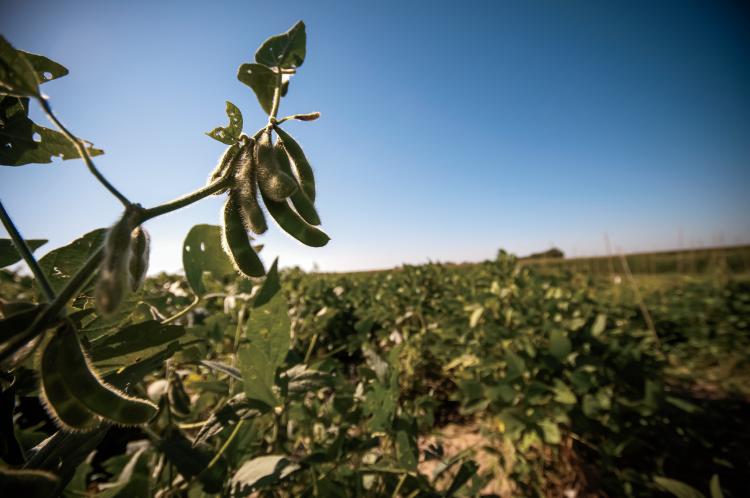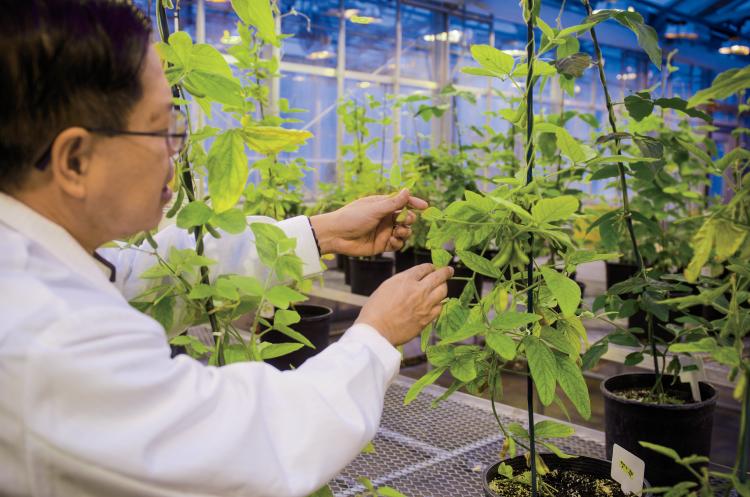Home > Missouri > Missouri Ag Education > Ready, Set, Research: University of Missouri Faculty Make History
Ready, Set, Research: University of Missouri Faculty Make History

Missouri’s agriculture industry does more than provide a safe, abundant and affordable food supply. It changes lives, alters perspectives and contributes to the well being of the world.
When people gather to talk about agriculture, rarely do matters of cystic fibrosis, spina bifida, lymphocytic leukemia or cardiovascular disease nudge their way into a seat at the table. However, researchers at the University of Missouri in Columbia are working to change that. In some circles, they have already managed to ensure a place for those topics from now on.
Dr. Randall Prather and his team at the National Swine Resource and Research Center at the University of Missouri, along with Michael Welsh of Howard Hughes Medical Institute at the University of Iowa, have been working diligently to provide a swine model of cystic fibrosis in hopes of developing a cure. For years, studies of the disease were conducted using mice. However in 2008, Prather made the decision to use swine.
“All the mutations in the pigs have exactly mimicked the problems in humans born with CF,” Prather says. “That’s why these new swine models are so important. We can start experimenting in ways that have never been possible.”
Along with Prather’s research to improve treatment of cystic fibrosis, he also studies and practices gene modifications in swine. Through Prather’s efforts, organ transplants from swine to primates have occurred and worked, something that had not been possible before. Prather has also successfully cloned fetal swine cells, exploring their potential to address major human health issues including cardiovascular disease and cancer.
Prather and his pigs have been recognized on a national and international level for their scientific advancements. In 2011, Prather was the recipient of the Distinguished Agriscience Scientist Award from the Christopher Columbus Foundation, which provided Prather with a grant to support his embryonic research. Most recently, he was honored with the 53rd annual Distinguished Faculty Award from the Mizzou Alumni Association.
Agricultural research at the University of Missouri expands well beyond Prather’s lab. In fact, in the College of Agriculture, Food and Natural Resources alone, researchers study facets of agriculture ranging from economics to livestock production and nutrition, to education, engineering, communications and recreation. Meteorology, forestry, soil and plant sciences also have thriving programs.

In the plant sciences program, Dr. Melissa Goellner Mitchum is making history with her research on cyst nematodes and their affects on the soybean plant. Dr. Goellner Mitchum is an associate professor and has researched cyst nematodes for nearly a decade.
Soybean cyst nematodes are a small invasive roundworm species that attack the roots of the soybean plant. The pests are responsible for huge yield losses to soybean farmers worldwide making them an expensive threat. In October 2012, researchers from the University of Missouri and their partners at Southern Illinois University announced they had not only identified a pest resistant gene associated with the cyst nematode, but they were also able to clone it.
However, the resistant gene wasn’t the only reason to celebrate the reward of years of labor. One of the genes discovered was also associated with spina bifida, leukemia and cardiovascular disease.
“I never imagined it would be this complex,” Goellner Mitchum says. “The gene responsible for the nematode resistance was completely unexpected. It is common in nature and found in humans, and ithas been linked to a variety of diseases.”
The potential for these researchers and many others at the University of Missouri to address not only challenges facing agricultural production, but also public health issues is a source of great optimism for Prather, Mitchum and their colleagues.
Their discoveries have reminded many of the relevance of agriculture on a grand spectrum, and helped ensure that the College of Agriculture, Food and Natural Resources and the University of Missouri remain educational and research powerhouses well into the future.



